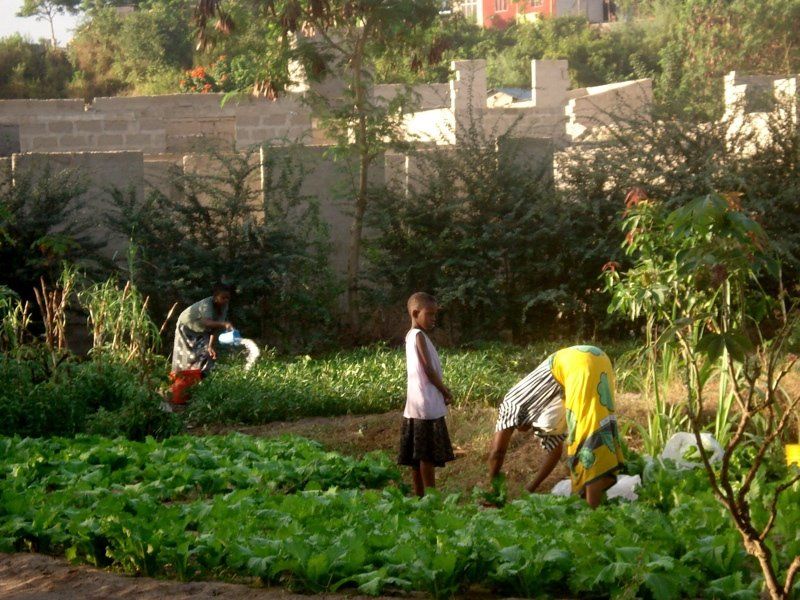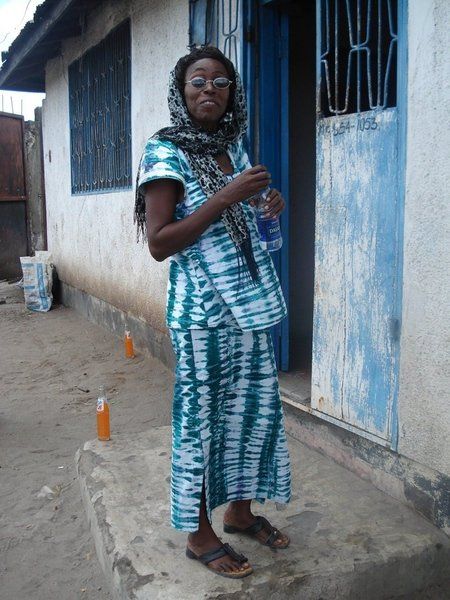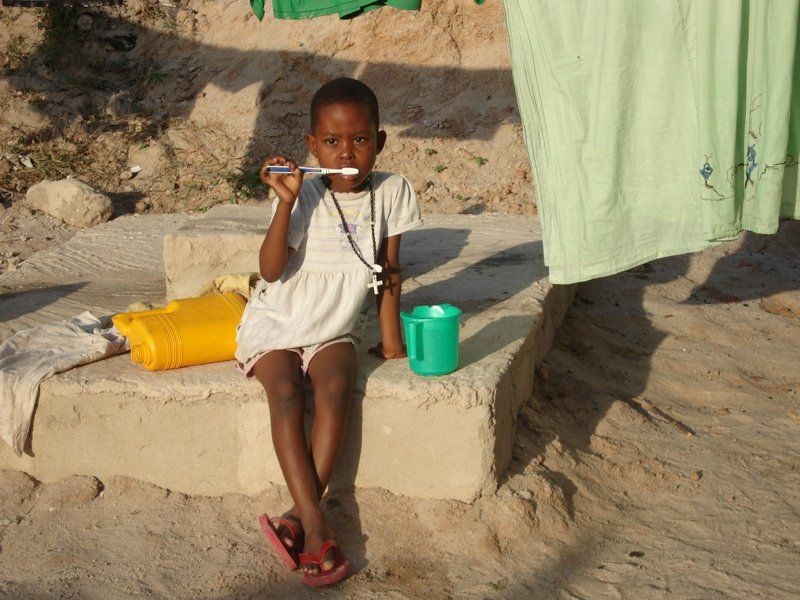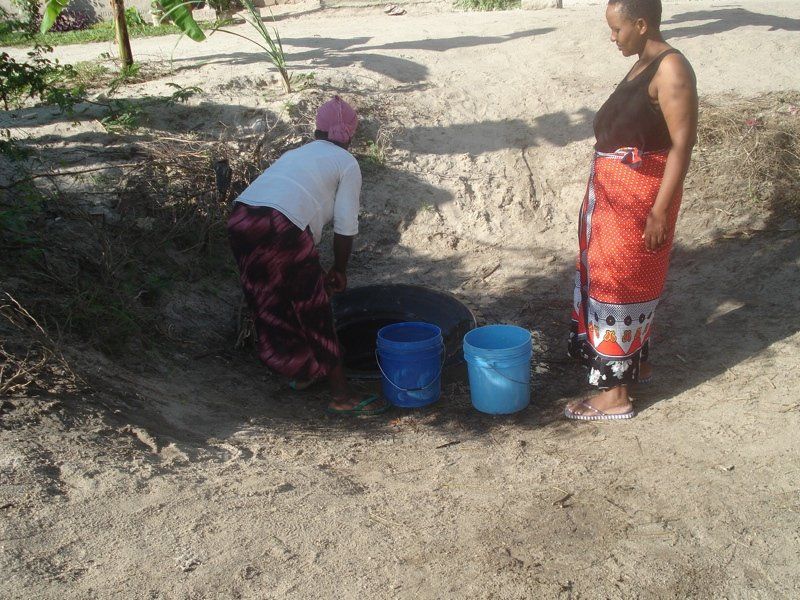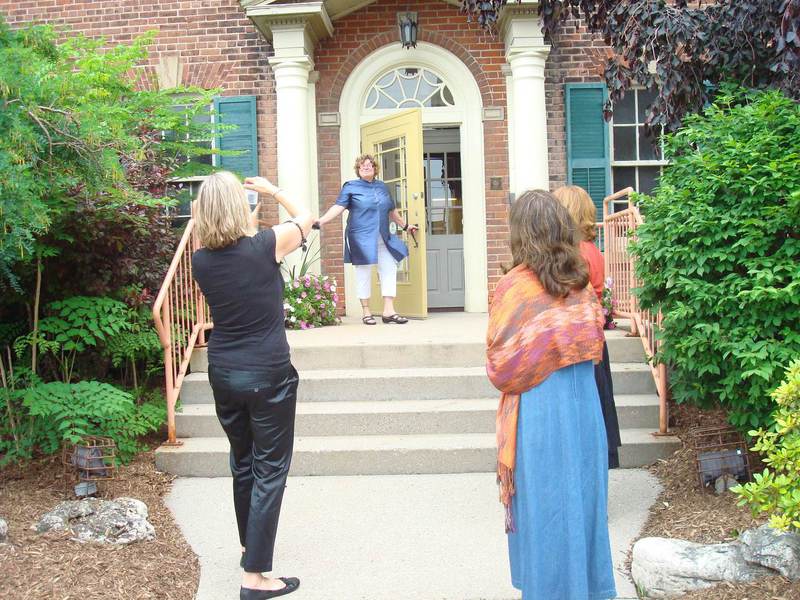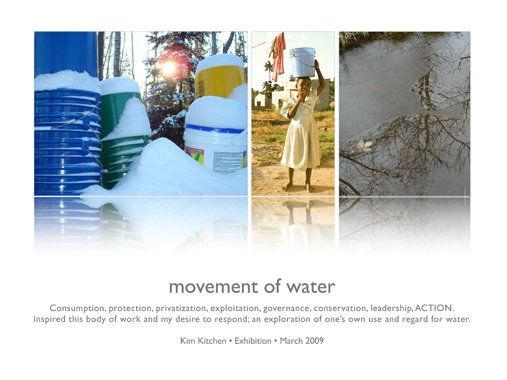Movement of Water • 2009
Movement of water documents Kim’s front line experience in a neighbourhood of Dar es salaam Tanzania, city of four million in the sub-Sahara in 2007. The artist’s multi-media installation highlights the labour-intensive process of searching for and collecting water, water that is often polluted or toxic. Kitchen’s experience in a community where gathering water is a daily priority, with deadly consequences led her to reflect on her own relationship with water. The exhibition incorporates large photographs taken in her neighbourhood of 3 months while in Dar es salaam, juxtaposed with journal entries and plastic pails filled with locally sourced water. Kitchen also recorded her use of water in video format to stimulate awareness about the availability of clean water which during installation is projected into a steel drum of water.
The film presents water use specifically Kim’s home and surrounding area. The film considers all actions relevant to the daily use of water. As she produced this film, Kim became aware of the following:
Solitary in access and use, actions of accessing water are individually based. There are no visual clues or acknowledgement of where the water has come from or where the water goes once we have accessed what we need. The technical aspects of turning on taps and hoses, pushing buttons or turning dials, separates us from seeing the origins of the water source. In our daily actions, there is no thought given or strategy devised as to how we will use the amounts required for the day. Water is unlimited in our minds.
As we travel to lands in the sub-Sahara, we observe the collective force required for the access, gathering and use of water. It is not only clear where the water comes from, how the water is used is also planned with precision. Water from the creek is for one thing, while water from the well is for another. Different pails correspond with the different uses. There is daily discussion, in great detail, about the quantity of water needed and for what, who is responsible to facilitate the fetching and from where. There is also attention given to the time of travel and the time spent sitting in the line-ups. It is not assumed nor expected there will be water tomorrow.
It is my intention to engage, for those who simply turn on a tap, who relate to the movement of water as being; a river roaring, a babbling brook, waves lapping, the rinse cycle of the dishwasher, a sprinkler system watering grass, a tub filling, a toilet flushing. In this project, Kim draws attention to the global issues of water consumption, protection, privatization, exploitation, governance and conservation.


